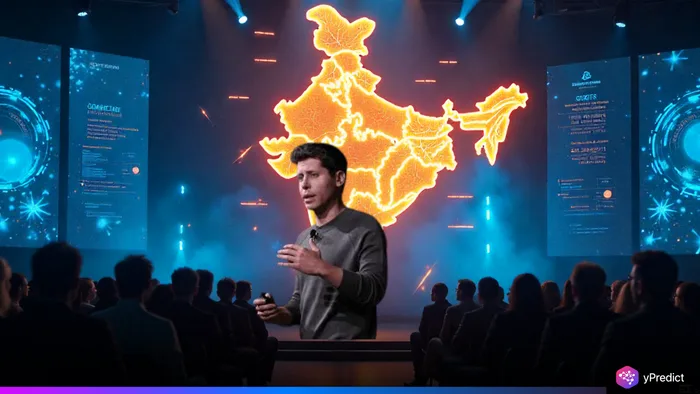
OpenAI CEO Sam Altman put India in the spotlight by predicting it will soon become the world’s largest AI market. At the GPT-5 launch, he praised the country’s rapid AI adoption and the innovative ways people and companies are using the technology. India already ranks as OpenAI’s second-largest market after the United States.
Sam highlighted how AI is becoming widespread, with emerging markets like India moving from being consumers to active contributors. With its fast-growing economy, rapid digital transformation, and tech-savvy population, India stands ready to lead the next wave of AI adoption. The launch of GPT-5 will deliver AI to companies, developers, and the public at an unmatched speed and scale.
GPT-5 Launch: OpenAI’s Most Advanced Model Yet
With the GPT-5 launch, OpenAI reached a major milestone in its technology roadmap. The release includes three versions—GPT-5, GPT-5-mini, and GPT-5-nano—allowing developers to choose based on speed, efficiency, or cost. Sam Altman called GPT-5 the most powerful AI model OpenAI has built, capable of handling highly complex programming and making autonomous decisions with remarkable accuracy.
Altman described GPT-5 as “more intelligent, quicker, and highly practical,” positioning it as a leap forward in AI usability. The model offers responses that match PhD-level expertise, making it a valuable tool for research, enterprise automation, and personalized AI-driven solutions. For India’s growing developer and startup community, these capabilities could significantly lower barriers to building advanced AI applications.
India as the Future Largest AI Market
At the launch event, Sam Altman shared his excitement about AI growth in India, saying, “India could be our biggest market after the U.S.” He credited this to the country’s rapid AI adoption and its talent for finding innovative, real-world uses for AI tools.
Across India, industries are weaving AI into different sectors. Businesses see it as a cost-effective way to solve problems, marking a deeper shift toward tech-driven solutions. This momentum positions India to scale AI adoption and innovation faster and at a greater level than any other market worldwide.
Commitment to Affordability and Localized Solutions
Altman emphasized that OpenAI’s priorities go beyond releasing powerful models. The company also aims to offer affordable AI with the right partners for India. By considering local infrastructure and price sensitivity, OpenAI hopes to make AI valuable for both small businesses and large enterprises.
He also announced plans to visit India in September. The trip will focus on engaging with local stakeholders, exploring partnerships, discussing AI policy, and strengthening India’s AI ecosystem.
Impact of GPT-5 on India’s AI Ecosystem
The introduction of GPT-5 could possibly be a game changer for India’s tech landscape. Developers can produce applications more quickly, train AI models more efficiently, and use AI in industries more easily. In terms of startups, this means quicker ramp-up times, less cost to operate, and more potential for scaling up.
Also, the availability of flexible versions of GPT-5 allows organizations use models that align with their budget and performance expectations. This flexibility can help spur AI adoption within smaller cities and rural areas which may not be compatible with growth from a technological growth angle due to infrastructural constraints.
A New Era for AI Development in India
As the world looks on at India’s fast-growing technology landscape, India is poised to rank as a leader in innovation in AI. Altman’s view of India being the largest AI market is more than a forecast; it points to India’s rising presence as a determiner of how AI is created, implemented, and regulated.
With AI increasingly infused into our daily lives, India will be able to provide a different set of use cases (from farm optimization to personalized learning) as examples for emerging economies. It is likely that GPT-5 will be the tipping point that can elevate these actualities into normalized practices.






